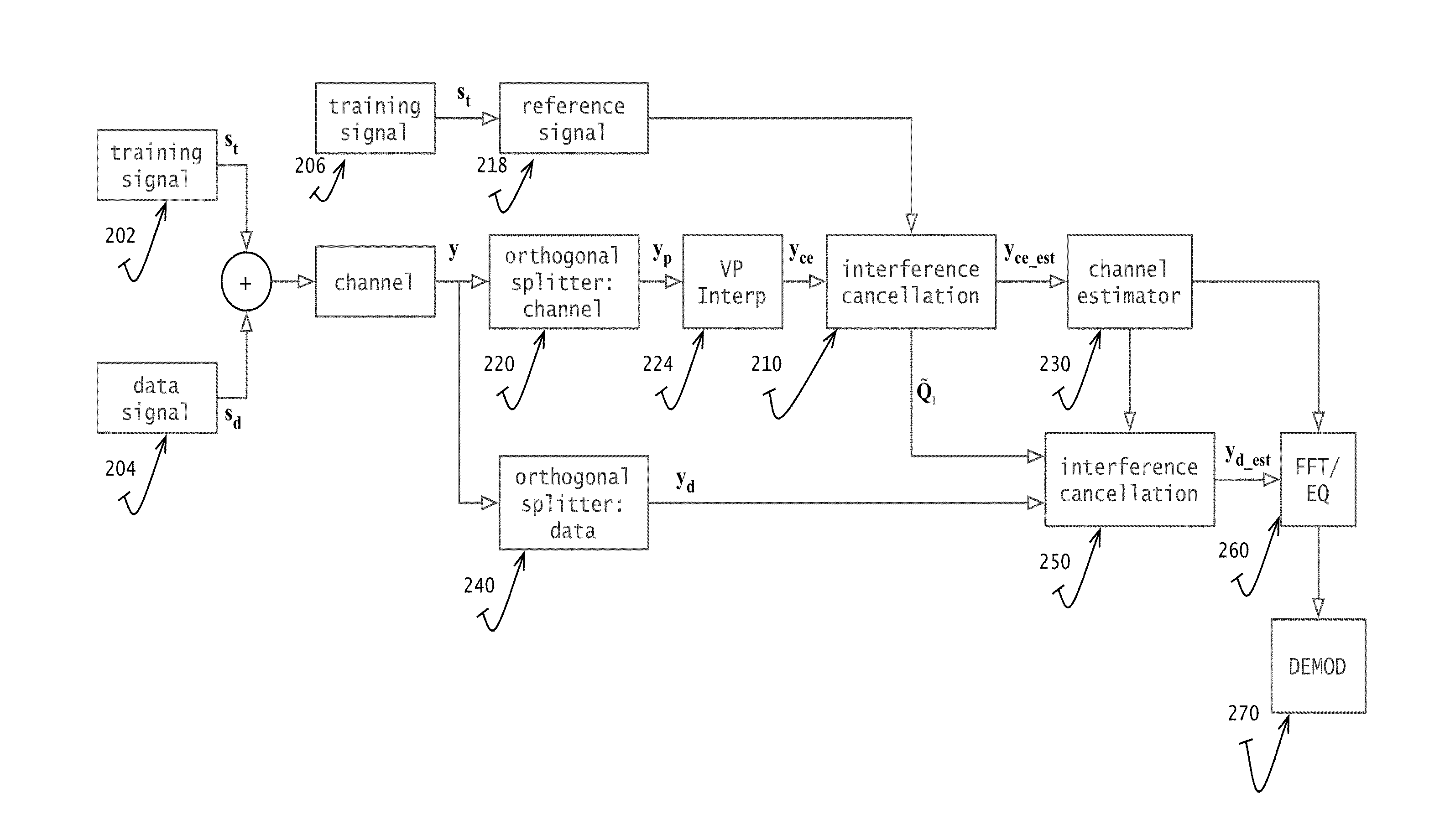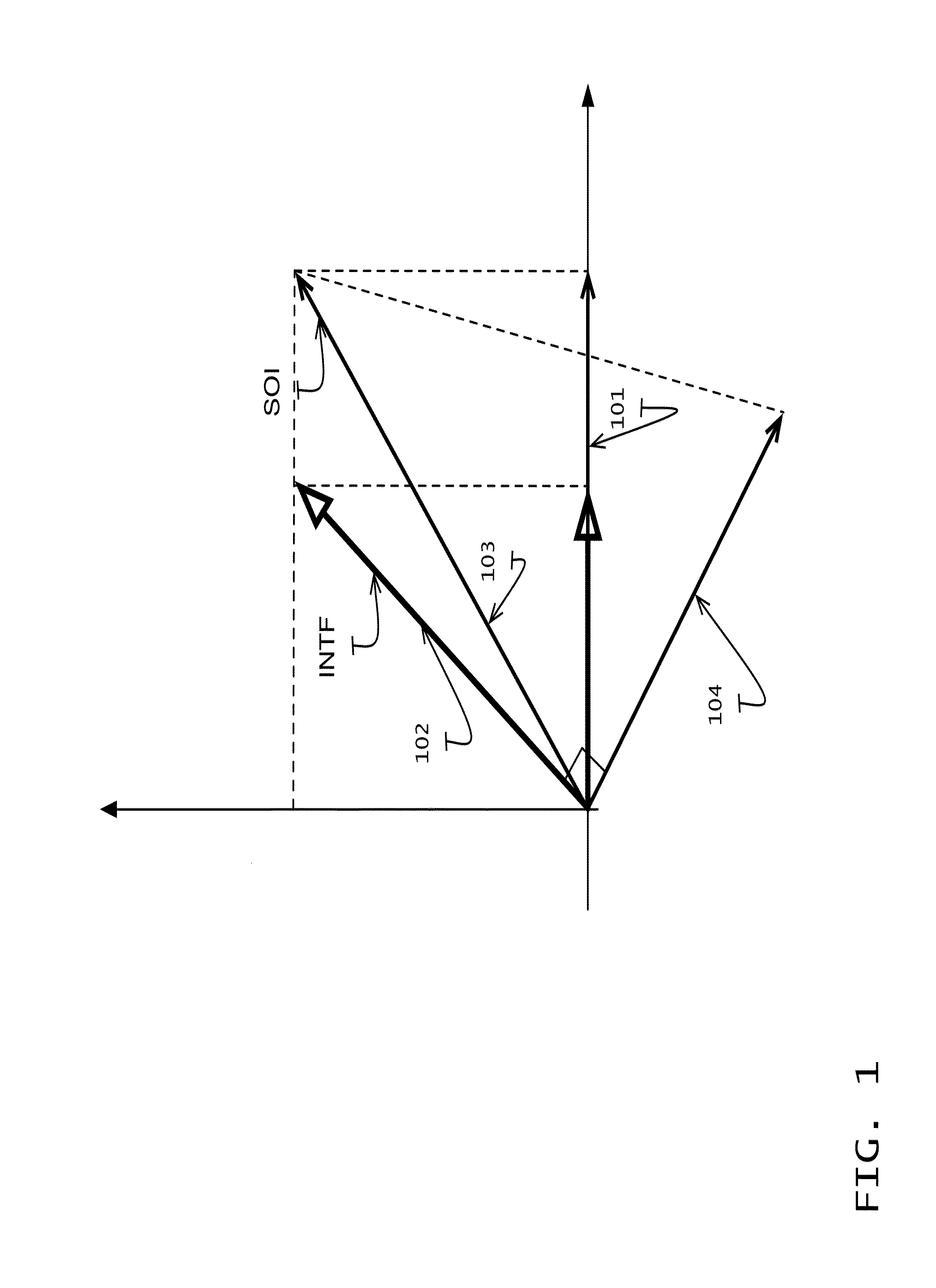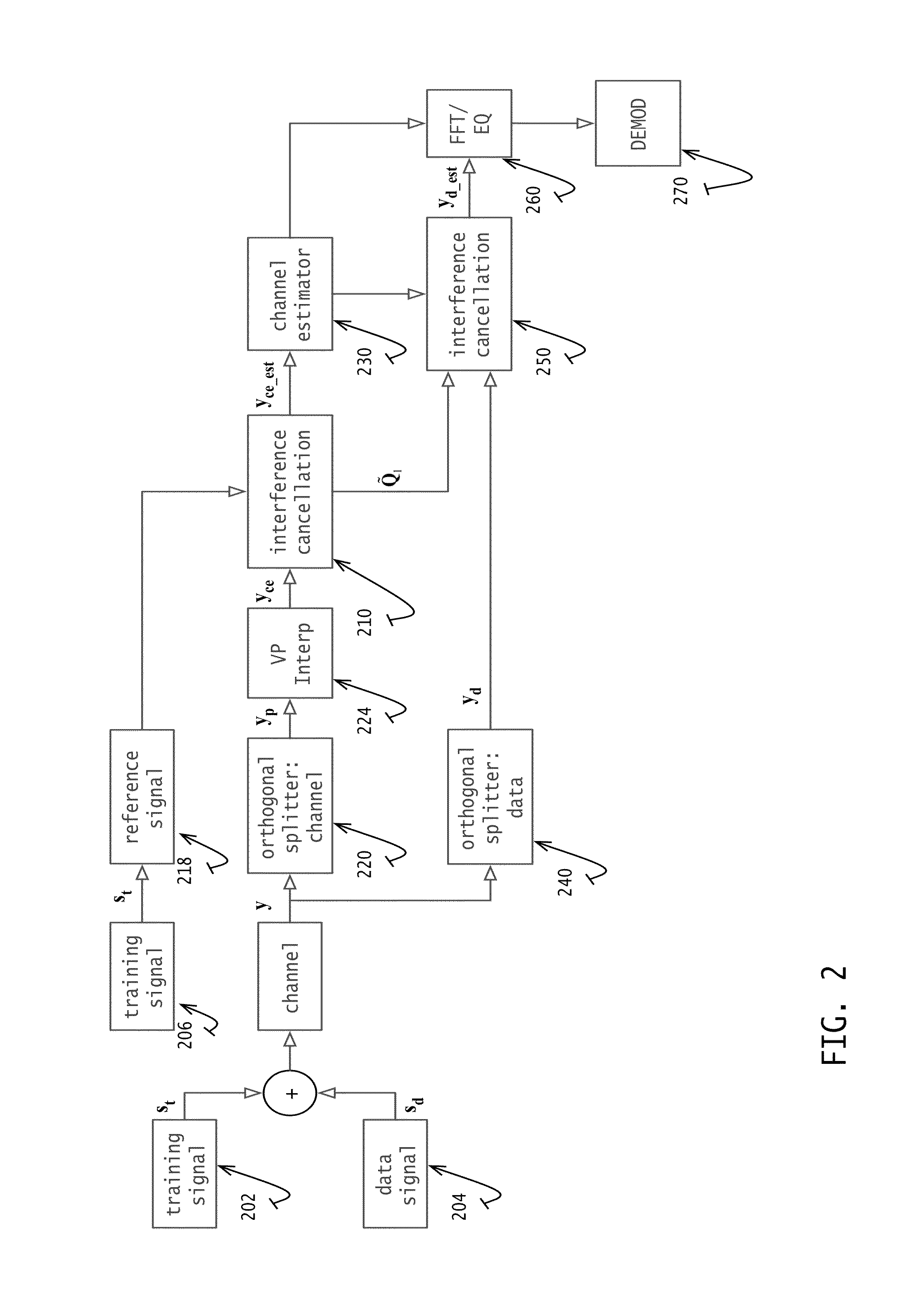Communication system and method using subspace interference cancellation
a communication system and subspace technology, applied in the field of signal processing, can solve the problems of limiting achievable performance, interference mitigation strategy cannot rely solely on knowledge of the characteristics of interfering signals, and inability to effectively characterize significant interferers based on system-wide waveform properties
- Summary
- Abstract
- Description
- Claims
- Application Information
AI Technical Summary
Benefits of technology
Problems solved by technology
Method used
Image
Examples
Embodiment Construction
[0017]An aspect of the present invention provides a method in an OFDM system including receiving a signal comprising at least one OFDM symbol. The method includes extracting training information from the OFDM symbol, performing interference mitigation on the extracted training information to produce reduced interference training information, and performing channel estimation using the reduced interference training information to produce a channel estimate. The method also includes equalizing at least a portion of the OFDM symbol using the channel estimate.
[0018]A further aspect of the invention performs a second interference mitigation process on at least a data portion of the OFDM symbol in response to the channel estimate. Still further, the second interference mitigation uses the channel estimate to generate a basis and, using the basis, perform lossy compression followed by decompression on at least a portion of the OFDM symbol.
BRIEF DESCRIPTION OF THE DRAWINGS
[0019]FIG. 1 illus...
PUM
 Login to View More
Login to View More Abstract
Description
Claims
Application Information
 Login to View More
Login to View More - R&D
- Intellectual Property
- Life Sciences
- Materials
- Tech Scout
- Unparalleled Data Quality
- Higher Quality Content
- 60% Fewer Hallucinations
Browse by: Latest US Patents, China's latest patents, Technical Efficacy Thesaurus, Application Domain, Technology Topic, Popular Technical Reports.
© 2025 PatSnap. All rights reserved.Legal|Privacy policy|Modern Slavery Act Transparency Statement|Sitemap|About US| Contact US: help@patsnap.com



